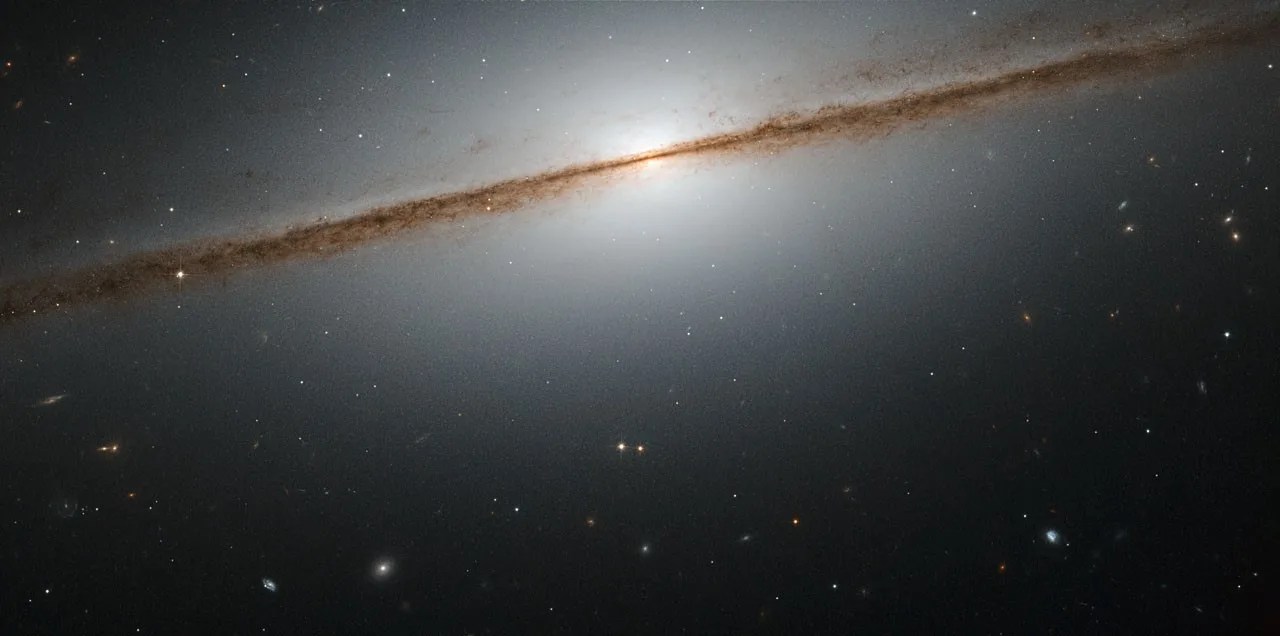Caldwell 43
Known as the “Little Sombrero,” Caldwell 43 was documented by British astronomer William Herschel in 1784.
Distance
40 million light-years
Apparent Magnitude
10.5
constellation
Pegasus
object type
Spiral Galaxy

Hubble has allowed astronomers to view galaxies of all shapes and sizes from nearly every angle. When a galaxy is seen edge-on, the mesmerizing perspective reveals a dazzling slice of the universe. Caldwell 43 (C43), also known as the “Little Sombrero,” is one such galaxy.
The Little Sombrero was discovered by British astronomer William Herschel in 1784. The dusty spiral gets its nickname from the Sombrero galaxy (M104), which resembles a broad-rimmed Mexican hat and was discovered by the French astronomer Pierre Méchain just a few years earlier in 1781. Also viewed from its edge, the Sombrero galaxy is located just 28 million light-years away and looks larger than the Little Sombrero. In reality, they are nearly the same size. The Sombrero appears bigger because it is closer. With a magnitude of 10.5, the Little Sombrero is tougher to spot because it is farther away, at a distance of 40 million light-years from Earth.
Also known as NGC 7814, the roughly 80,000-light-year-wide galaxy is billions of years old. Observers equipped with a telescope at least 7 inches in diameter will have the best luck spotting the galaxy, which resides in the constellation Pegasus. The dim, elongated galaxy is bright enough to be seen in moderately light-polluted skies. In the Northern Hemisphere, the autumn months provide the best opportunity to view C43. In the Southern Hemisphere, look for it in the springtime.
For more information about Hubble’s observations of Caldwell 43, see:
Dancing on the Edge


Glossary
Galactic Bulge - A dense collection of stars at the center of a spiral galaxy, possibly hosting a supermassive black hole.
Galactic Halo - A roughly spherical collection of old stars and globular clusters surrounding a spiral galaxy.
Magnitude - The brightness of an astronomical object, represented by a number; bright objects have low numbers on the magnitude scale, while dim objects have high numbers.
Explore Hubble's Caldwell Catalog
The following pages contain some of Hubble’s best images of Caldwell objects.

Caldwell 1
Also known as NGC 188, this group of stars formed from a large cloud of gas making the stars roughly…

Caldwell 2
This shell of gas is expanding outward, away from the dying star within.

Caldwell 3
This barred spiral galaxy was first spotted by British astronomer William Herschel in April 1793 in the constellation Draco.




